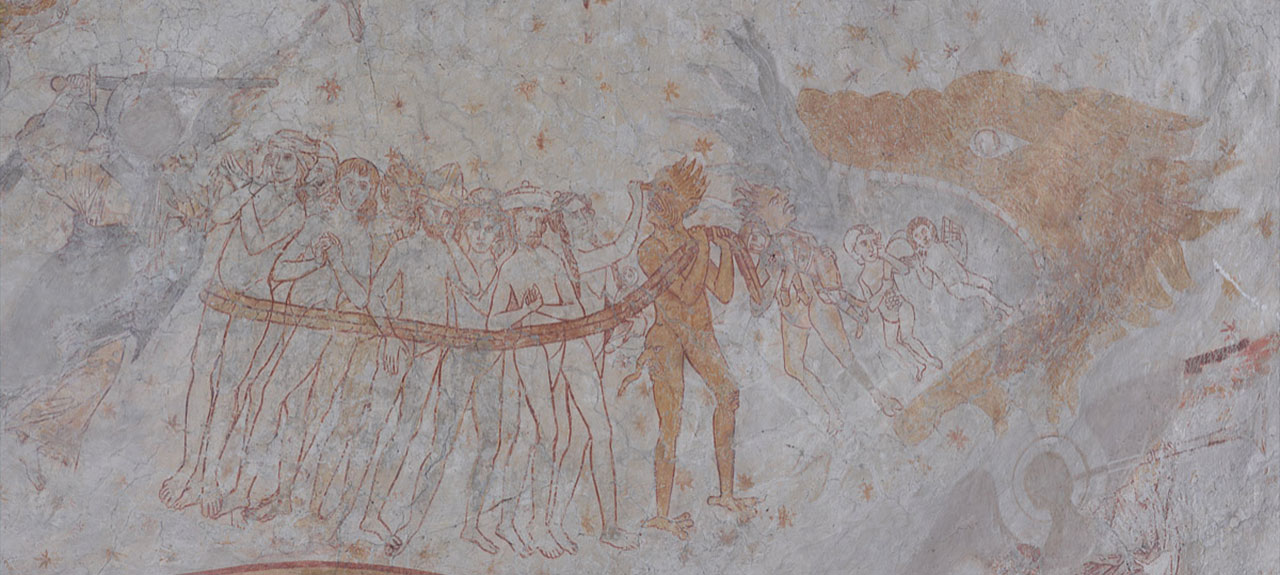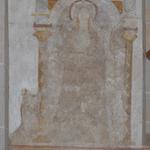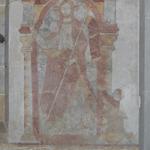Dortmund-Brechten
Protestant church, formerly St. John the Baptist, Widumer Platz 1
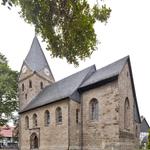
Dortmund-Brechten, Protestant church, formerly St. John the Baptist, exterior view from the southeast. Photo: LWL/Dülberg.
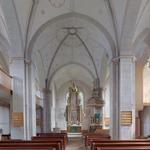
Dortmund-Brechten, Protestant church, formerly St. John the Baptist, interior view facing east. Photo: LWL/Dülberg.
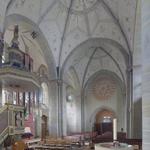
Dortmund-Brechten, Protestant church, formerly St. John the Baptist, interior view towards the southwest. Photo: LWL/Dülberg.
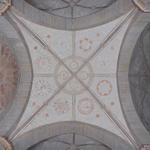
Dortmund-Brechten, Protestant church, formerly St. John the Baptist, central nave, west vault with vault painting. Photo: LWL/Dülberg.
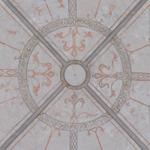
Dortmund-Brechten, Protestant church, formerly St. John the Baptist, central nave, east vault with vault painting, detail. Photo: LWL/Dülberg.

Dortmund-Brechten, Protestant church, formerly St. John the Baptist, choir vault, vault painting, Last Judgment. Photo: LWL/Dülberg.
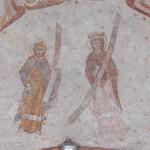
Dortmund-Brechten, Protestant church, formerly St. John the Baptist, choir vault, vault painting, Last Judgment, Mary and John the Baptist, detail. Photo: LWL/Dülberg.

Dortmund-Brechten, Protestant church, formerly St. John the Baptist, choir vault, vault painting, Last Judgment, enthroned Christ, detail. Photo: LWL/Heiling.
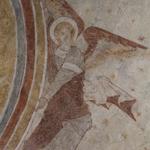
Dortmund-Brechten, Protestant church, formerly St. John the Baptist, choir vault, vault painting, Last Judgment, angel carrying the mandorla, detail. Photo: LWL/Heiling.
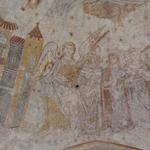
Dortmund-Brechten, Protestant church, formerly St. John the Baptist, choir vault, vault painting, Last Judgment, Procession of the Blessed, detail. LWL/Heiling.

Protestant church, formerly St. John the Baptist, ground plan (The mappings (German version) can be opened by clicking on the red markings).
Building structure
Hall church comprising two bays with west tower and straight closed choir. To the north of the choir annexe with vestry.
Building data
West tower in the basement levels from the previous building dating from the second half of the 12th century. Nave and choir and the uppermost tower storey date from the 1240s, the eastern end of the choir and its vault as the result of a change in plan almost immediately after erection, around 1250. Vestry added after 1500.
Romanesque polychrome architectural decorations
Unusual within the Romanesque polychrome architectural decorations is the combination of piers with the stone left visible and with richly decorated plaster areas on the vaults and walls that complete the built architecture to a great extent. At prominent points within the room the decoration was partly carried out in relief plasterwork in a sgraffito technique. The main painted and relief design features are the arcature of the nave walls, the apex ring decorations and the ornamental ribbons of the central nave vault, the vault ribs with ornamental disks in the side aisle and the tracery rose of the church nave west wall. The patterns of these forms of decoration can be found in French cathedrals of the Ile de France and in the Münster Cathedral. Small figures were also integrated in the polychrome architectural decorations of which some remains have been preserved.
The polychrome architectural decorations that exceed the usual level of quality and workmanship were created only a few years before the figurative wall paintings in the choir.
Figurative Romanesque wall painting
Choir vault: Last Judgment
Choir east wall: Holy Mary as Queen of Heaven, Resurrected Christ
Crafting technique/painting technique
The ground is formed by a double-layer of lime slurry that had been applied to the partly still damp plasterwork. This was followed by the red underdrawing of the figures. In the case of the naked Blessed and the Damned the modelling of the muscles and faces and the shading of the hands and legs was carried out in yellow ochre. Finally the figures were again outlined with dark iron-oxide red. On the other hand the devils are painted with stronger ochre shades and red contours.
The light incarnate of the faces of Mary and John appear today to be grey, whether as a result of soiling or of the greying process of the originally pink-coloured faces cannot be defined conclusively. The drawing of the facial features has been applied with dark iron-oxide red, whereby the highlights on the eyeballs have been omitted. The faces were also modelled with light reddish shadows.
The presumably blue coat of John appears today to be grey. Also the red of Mary’s gown also seems to have turned slightly grey.
In the mandorla with the enthroned Christ the painting layers are very reduced. The now ochre-coloured background was probably blue. Even the originally wider halo of the Judge of the World has been emphasised by recessed plaster modulations and gilding.
The vault surface, on which the Last Judgment is depicted, is light and ornamented with originally polychrome stars.
Similar in the painting technique are the figurative decorations on the choir east wall. Here too the background at least of Mary was blue.
Conservation history
In 1911 exposure and renewed overpainting by the church artist Hans Berg from Dortmund. In 1960/61 removal of the overpainting and conservation by the restorer Günter Goege.
The colouring and the fine details of the painting of the Last Judgment are reduced through changes in the pigments and losses of paint layers, but the Romanesque remains have still been preserved in a fairly informative condition on the whole. In contrast, the two figures on the choir east wall tend to feature fragments only.
The wall and vault surfaces in the choir have been clearly soiled by layers of dust and soot as well as cobwebs for more than 50 years after the last cleaning. The lime slurry used as a ground still adheres fairly well to the plaster that is mostly stable except for some removeable plaster scales. In some parts, particularly in the pendentives, there is some exposure damage that presumably goes back to the first exposure in 1911. Likewise in the vault pendentives, but also in the figures of the choir east wall, the casein consolidations carried out during the conservation from 1960 to 1963 have partially caused damage due to a peeling off of the paint layer. In the case of the two wall paintings, polyvinyl acetate had been used for consolidation of the parts that today are noticeably glossy. In larger areas in the vault, mainly in the picture of the Damned, casein coatings that have turned grey can be seen. The reintegrations originate from both stages of conservation, during the last of which work was mainly carried out using glazing grey reintegrations. The binding media (casein) offers a good breeding ground for micro-organisms.
Description and iconography
The Last Judgment combined an enthroned Christ in the pictorial tradition of the depictions of Christ in Majesty in a central mandorla borne by angels with a Last Judgment scene grouped in a circle around it with already condemned Damned and redeemed Blessed. The intercessors Mary and John the Baptist stand isolated in the west and bear immediate reference to the believers in the choir with their tituli and gestures which is singular in the case of the depictions of the Last Judgment. The trumpeting angels in the pendentives are called out from all directions to the redeemed, who are arising from their tombs. In this way the depiction of the Resurrection of Christ according to the book of St. Matthew (24,31) is here exactly reconciled with the architecture.
Also the paintings on the east wall of the choir, that show Mary as the Queen of Heaven and the resurrected Christ under canopies with founder figures, belong to this painting programme and link up with the pictorial traditions of the nuns’ convent in Essen, the patronage to which the church in Brechten was subordinated.
The representation of the Last Judgment in the choir should be understood as being programmatic, and with its appeal for repentance or confession, implements highly topical demands of the Roman Catholic Church as a result of the 4th Lateran Council in 1215 that in 1234 had become a legal obligation to undertake regular confessions. The desire for visualisation of the topic of confession connected with the Last Judgment in John‘s positioning, gesture and titulus has by all appearances motivated the changed implementation of this liturgical centre in the east, whereby the cultural-historical significance of the already high-quality painting cannot be esteemed highly enough.
Art-historical classification
Contrary to dating so far at around 1270, the wall and vault paintings of the choir can be set at an earlier date, around or shortly after the middle of that century. This is underlined by the mutual features with the figurative painting in the Protestant Church of St. Margaret in Kamen-Methler, also dated at around 1250. In proportion, stance and clothing of figures, this has quite rightly been compared with the figures of the Baptistery Chapel of St. Gereon in Cologne. Its creation can be limited to the few years from 1243-1245 on the grounds of historic sources. In particular the robes of the intercessors of Brechten and of the figures from Methler, falling over the feet in large and soft, creased folds, all unusual for Westphalia, can be found to be similar. Connections therefore exist to Cologne. The unconventional faces found in Ostönnen and Lippstadt and originating from the Soest area, with nose humps and black contours, can be clearly distinguished from the paintings in Brechten and Methler. Also the apostle figures of the St. Nicholas Chapel in Soest show different concepts of the figures, different falls of the folds and other facial features. Except for parallels in the composition of the flock of angels, the figures in the choir vault of the Hohnekirche of Soest are also clearly different. The idealised types of faces of the two paintings in Brechten and Methler, with large eyes and over-dimensional pupils are so special that they indicate the singularity of a separate workshop. This could have been located in Dortmund even though we have no further information about it.
Dating
Around 1250. Polychrome architectural decorations a few years earlier.

